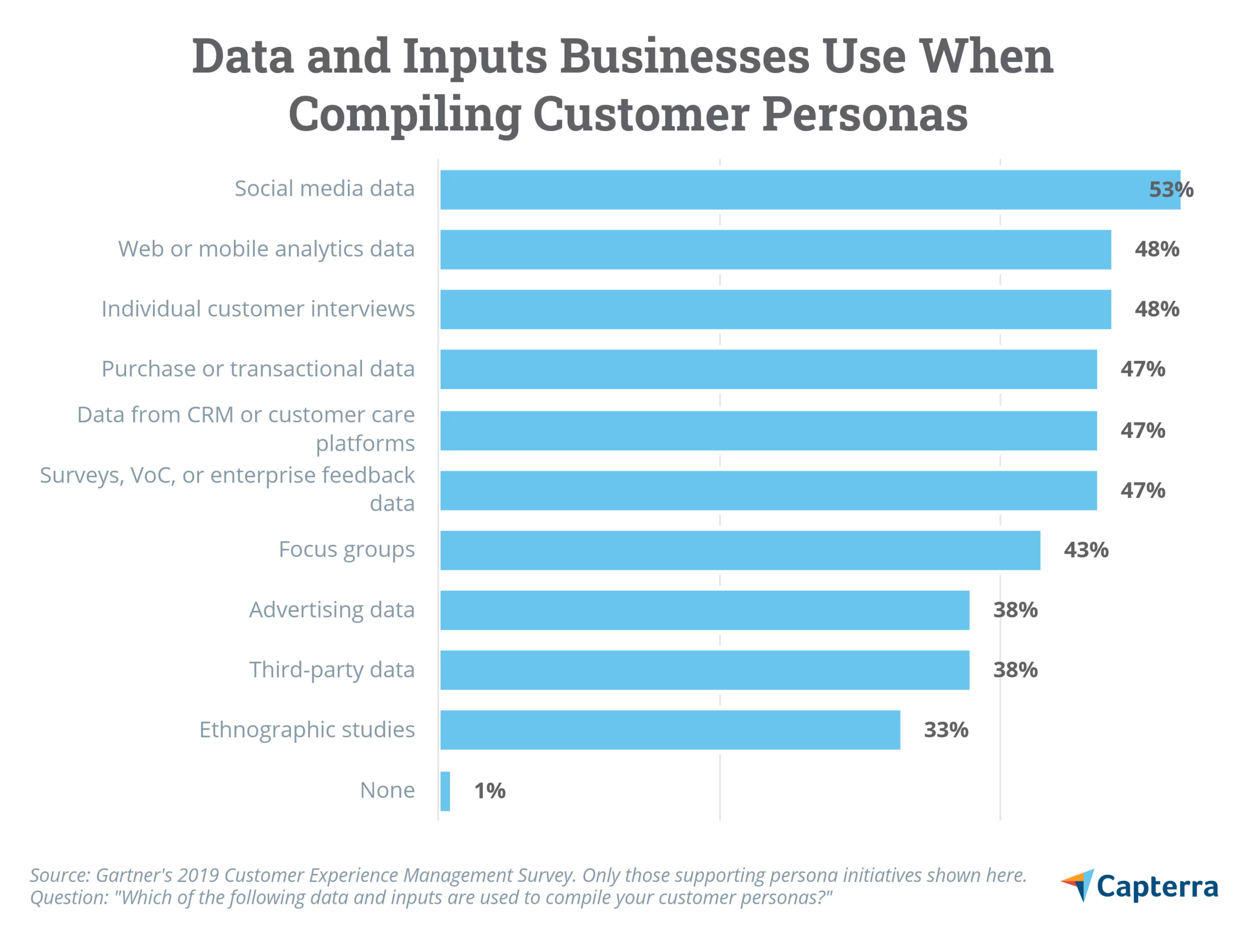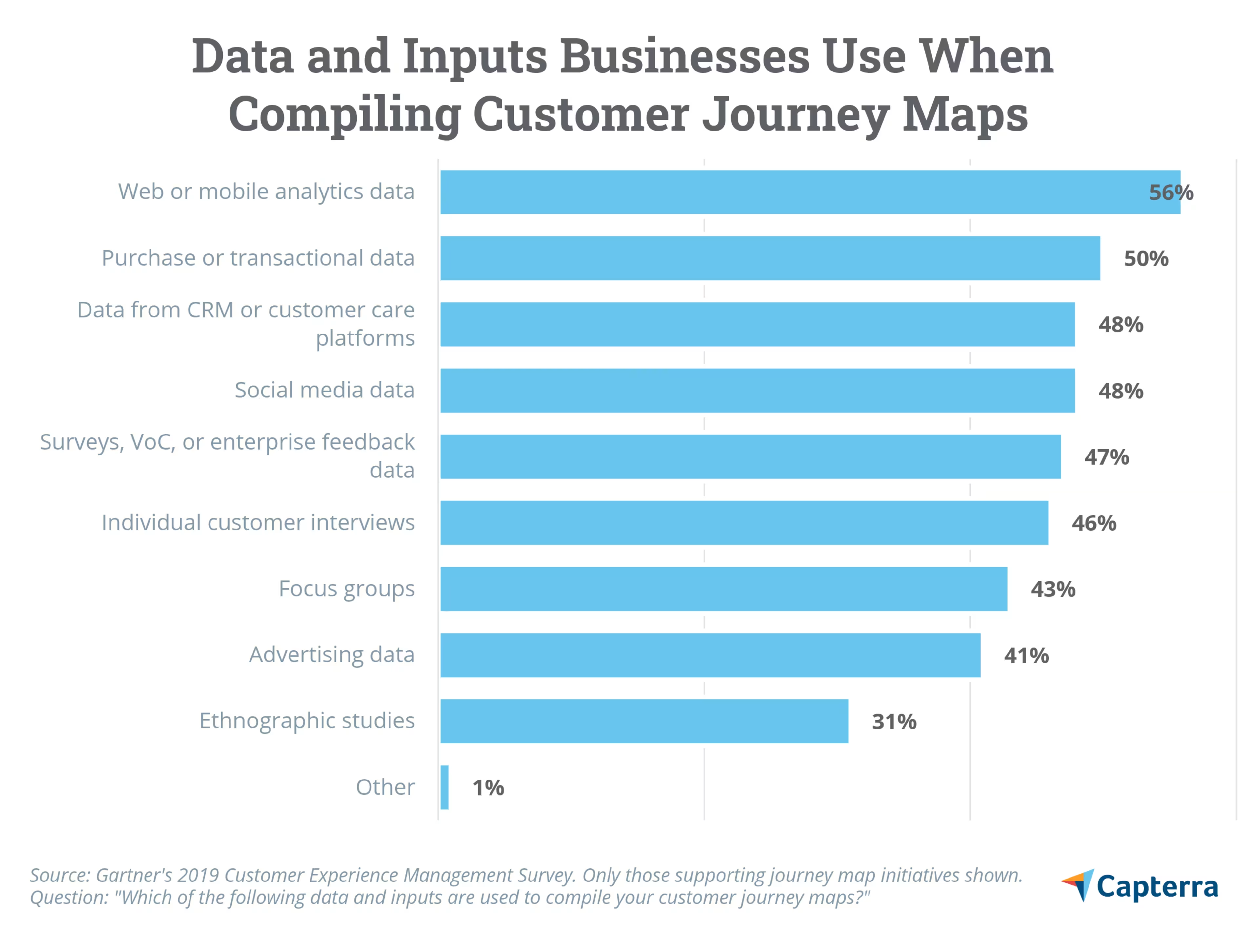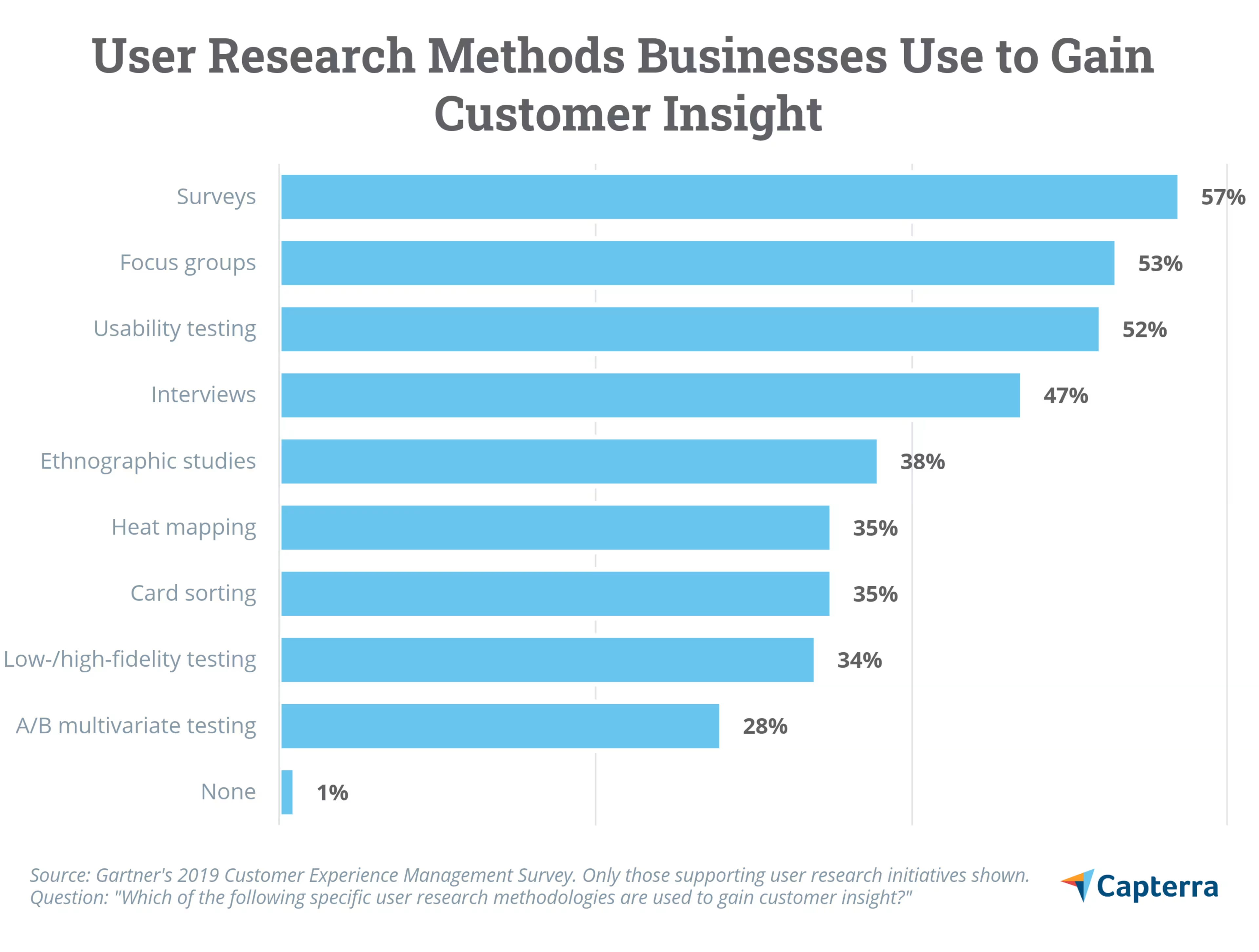Optimize your customer experience program by adding breadth and depth to your CX initiatives.

Customer experience (CX) is so expansive and wide-ranging that it can be difficult to know where to focus your optimization efforts.
We recently covered three essential markers of customer experience maturity within organizations: customer personas, customer journey maps, and customer insight programs. A strong CX program built on these initiatives will allow you to see issues within the customer experience and better prioritize needed improvements.
But is your organization getting the most out of these initiatives?
In this piece, we'll show how real companies are using these tools by highlighting key findings from Gartner's 2019 customer experience management survey. While that survey was of large, enterprise-level businesses, the results are still applicable to small and midsize businesses (SMBs), as these initiatives are achievable and scalable for all organizations.
We'll dig into the sources of information professionals use in their personas, maps, and insight efforts. Use these results to add breadth and depth to the information you leverage for your own initiatives, and in doing so, optimize your CX program.
3 ways to improve your CX program
1. Refine customer personas
Most large businesses have established customer personas and are actively using them to improve. Among CX professionals who support a customer persona initiative, 79% have established personas and use them in their CX efforts.
To refine your customer personas, add more layers of input.
Take a look at these data and information inputs that other businesses use to compile personas. Work on adding information that's within reach for your business that you aren't already using:

Around half of CX professionals involved in customer persona initiatives say they use social media data (53%), web or mobile analytics (48%), individual customer interviews (48%), purchase or transactional data (47%), data from CRM or customer care platforms (47%) or surveys/Voice of the Customer (VOC) data (47%) for compiling personas.
Given the popularity of these sources, take a look at your customer persona inputs and see if you can dig deeper into information that may already be available in your organization.
2. Evaluate journey maps
Like personas, most large businesses have established customer journey maps and are actively using them to improve the customer experience. Among CX professionals who support a customer journey mapping initiative, 72% have established maps and use them in their CX efforts.
Your journey maps can be improved by expanding the depth and breadth of information used to compile and validate them.

Roughly half of CX professionals involved in journey mapping use web or mobile analytics data (56%), purchase or transactional data (50%), data from CRM or customer care platforms (48%), social media data (48%), survey/VoC data (47%), or individual customer interviews (46%) to compile journey maps.
You may have noticed that these are the same sources that are popular for compiling customer personas, although the order is different.
This is great news for SMBs. You may already have data within your organization that you can use to improve both your personas and journey maps. If the sources of information above aren't already available at your organization, start discussing investments in a data source that would be beneficial in multiple ways.
3. Deepen your customer insight program
Among CX professionals who support user research initiatives, around half or more use surveys (57%), focus groups (53%), and usability testing (52%) to improve the customer experience. These were also the three most frequently cited methodologies that CX professionals find most useful in gaining customer insight.

Respondents also indicate a strong mix of user research types: evaluative, qualitative, behavioral, attitudinal, and quantitative research types.
Evaluative research could include UX research on how customers experience a product (e.g. usability testing). Qualitative research could include focus groups and interviews. Attitudinal research could include surveys about customer preferences, opinions, and beliefs. Behavioral research could include transactions, purchase history, etc. And quantitative research could include surveys, web and mobile analytics, and more.
Take a look at the mix of user research methods laid out here. This isn't a checklist, but it reinforces that strong CX efforts require a blend of qualitative customer listening efforts, quantitative data, and UX research in order to look holistically at the customer experience. SMBs should make sure that they have some combination of these research methods to go deeper in gaining customer insight.
Bringing CX efforts together
As you can see, there is a lot of overlap in the information needed to build and strengthen customer personas, journey maps, and customer insight programs. This is great news. Because of this overlap, ideally all three of these pieces can inform each other and give you a richer understanding of your customers' experiences and needs. With a diverse mix of information and approaches, you can build a strong CX program and ultimately improve the customer experience.
Technology can also bring these sources of information together in a more efficient, streamlined way.
Technology to help you enrich your CX program: